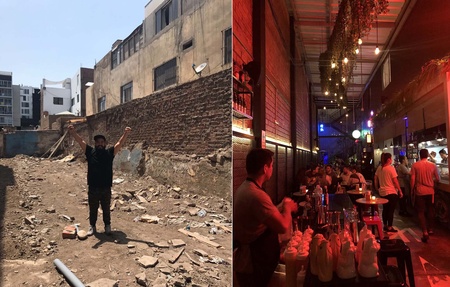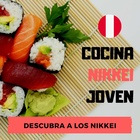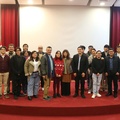There are restaurants that are looking for a culinary trend where they can insert themselves and be comfortable, especially if it is a trendy cuisine. In Peru, Nikkei gastronomy has been in vogue for a long time, but few dare to innovate beyond the 'toppings' of the makis . Some, like Sutorīto Māketto , avoid labels such as sushi bar or Japanese food, although they take these concepts to extend the category of Peruvian Nikkei cuisine.
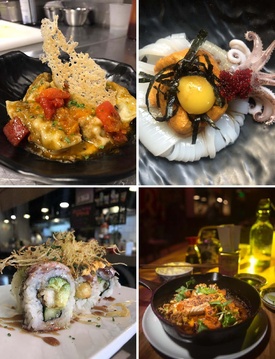
The creators of this proposal, closer to the urban cuisine of megacities such as New York, Tokyo and Lima itself, are the young chefs Javier Miyasato (31 years old) and Paulo Akama (30), an explosive mix for having such training. different but several points in common that have led them to this challenge with which they have overcome different complications. “We started with the idea of a market,” says Miyasato, with experience in restaurants such as Amoramar and Café de Lima (in both as gastronomic director, working in the second with Víctor Chang Say).
Beam? is a small street food place in Miraflores, a kind of Nikkei sandwich shop that serves buns, or value breads, with different fillings. This was the first culinary experience for Miyasato, who started in the kitchen thanks to well-measured effort. “I went to work at a restaurant to help in the administrative part but I didn't last and I told the owner that I wanted to cook. I did a test and he liked what I prepared.” At Amoramar, Miyasato's role was between the kitchen and the office. He spent three years there until he decided that it was time for his own place, which was not going to be one but two.
The other Nikkei
Beam? It was one of the innovations that Javier Miyasato undertook with his sister Andrea in the administration and his partner Marcelo Wong. And it was when he was walking through the streets surrounding his premises, where there were formerly mechanical workshops, that he found a vacant lot where he came up with the idea of making a Nikkei market, a place where there would be stalls with different types of Japanese food, in addition to products to consume and buy.
“It was a challenge of greater size and expectation,” recalls Javier, who for that adventure decided to look for a chef with a profile different from his own, but with essential points in common. Paulo Akama had worked as an itamae at the Ibuki restaurant and in Edo, where he learned Japanese cuisine from true masters like Rafael Matsufuji. “I'm still learning,” says the designer, too. The meeting point, in addition to friendship, was the fact that we came from families of restaurant owners.
While Javier's family has a Creole restaurant in Callao, Chelo's, Paulo's family owned a tavern, Café Bar Miyahira, in the Breña district, a format that has currently become popular in Lima for its on-the-go dishes. , Creole and very homemade. Working together was the opportunity to balance both visions held by the Nikkei but without falling into the commonplace of the sushi bar, with an oriental theme and ceremonious treatment.
clandestine kitchen
Sutorīto Māketto is inspired by the slums of Tokyo, where these chefs traveled to capture that essence. “There is a Japan that is not talked about, a more chaotic one, that of the alleys where the workers go to eat and drink,” says Javier. The first thing was to build the store and implement it, a task that Miyasato had already dedicated himself to but on this occasion so many adversities arose that they could not open with the store ready.
“At first, people had to enter through a curtain and found bags of cement and construction materials. “They thought they had taken the wrong address,” the partners recall. That's how they began to work behind closed doors with 'clandestine dinners', announcing the days they would be open. “They were sold in advance, without the public knowing what they were going to try.” That allowed them to make money until the installations were completed.
Today, the place has an urban touch, with unpolished walls and floors, graffiti and neon as decoration and rustic tables, an aesthetic far removed from Nikkei food restaurants. In addition, the trial season allowed them to outline dishes that are now classics, such as the strip roast hamburger or their clam tiradito, and to include others that are on their way to becoming references, such as the batayaki pan with the catch of the day, in togarashi butter, roasted sweet potatoes and fried cauliflower, or pork rib glazed with Thai shoyu and fried garlic.
The modern ponja
For the Miyasato-Akama duo there are essential things, such as the quality of the input and its proper treatment. Hence, its menu has a wide variety of makis and nigiris . “There are ingredients and flavors that have been lost, for example, we use very crunchy nori sheets, oysters and kimchi (fermented cabbage).” Creations such as squid sashimi with sea urchins and quail eggs highlight those intense flavors that are liked by the target audience.
The idea of a modern Nikkei restaurant is based on this: a lighter service, close to Paulo's grandparents' tavern, where one can find, little by little, dishes of Creole origin, such as a tamale or a pickle, treated with 'techniques'. ponja'. “There is also a concept that we really like, which is ' chuka ', Chinese cuisine prepared by a Japanese,” says Miyasato, remembering that ramen noodles come precisely from the Asian giant. “We use china and chairs for the table,” says Miyasato.
At Sutorīto Māketto you can find a ramen in a light batayaki , with seafood and sautéed asparagus; or innovative dishes such as Māketto Fried Chicken, or MFC, alluding to KFC, but with chicken marinated in karaage and a Japanese-style tartar sauce. “We are not limited by classic Japanese recipes,” adds Paulo, and that versatility is what they seek as their identity. “Nikkei cuisine works because it is well made, not because it is an imitation of Japanese cuisine,” says Javier.
The challenge for this duo is for this proposal to also consolidate itself as a nighttime option, with wines, cocktails and Japanese beers, as well as canteen dishes. For now, they are already open until midnight on Saturdays and their street fusion (Japanese, Peruvian, Chinese, Thai) is playing in the media 3 and the public is beginning to think about something other than the makis (pokes, gyozas , buns, taquitos ) when you crave Nikkei food.
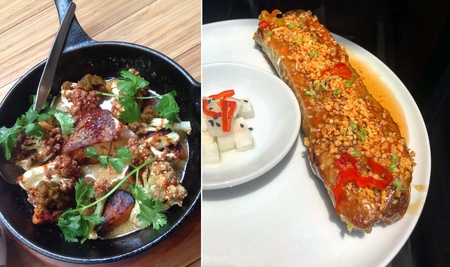
Note:
1. “ [Video] Maketto, a street food with a lot of streets and lots of food ,” ( Gestión , October 2, 2019)
© 2020 Javier García Wong-Kit



